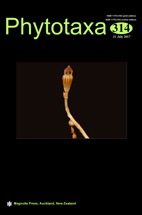Abstract
The genus Paris Linnaeus (1753: 367) was traditionally placed in Liliaceae (Melchior, 1964), and then in Trilliaceae, which was divided into two genera based on floral merosity: Trilliun Linnaeus (1753: 340) has trimerous flowers, and Paris has variable floral merosity (Li 1984; Zomlefer 1997; Li 1998). However, Trilliaceae were recently revised using molecular phylogenetic approaches and placed in Melanthiaceae (Ji et al. 2006; APG IV 2016; Kim et al. 2016). Paris consists of about 28 species of perennial herbs mainly distributed and endemic in eastern Asia (Osaloo & Kawano 1999; Liang & Vitor 2000; Li et al. 2017), with the center of species diversity in China, where Paris is well known for its medicinal value.

